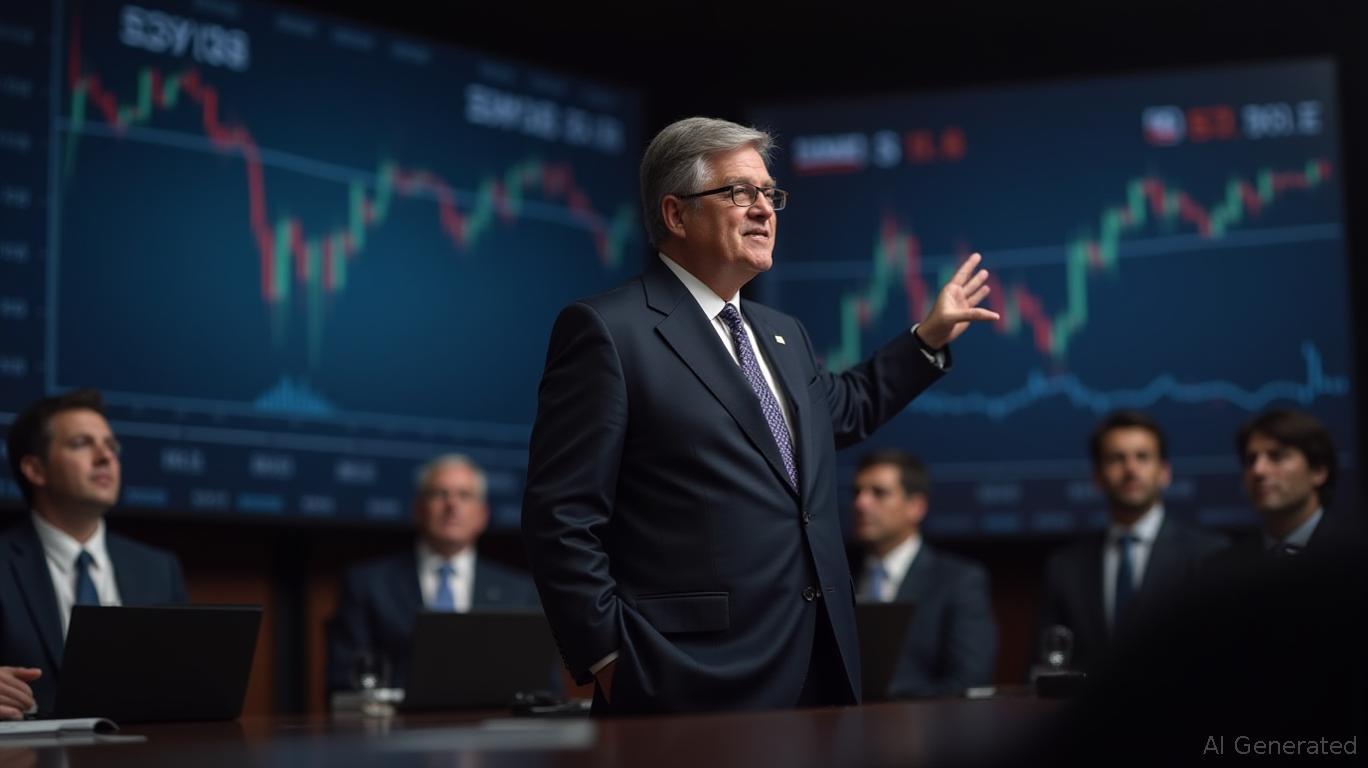MiCA’s regulations on stablecoins may heighten systemic risks, according to experts
- EU's MiCA regulation, aimed at crypto oversight, risks amplifying stablecoin market systemic vulnerabilities by overlooking macro-level threats like cross-border multi-issuer models. - Multi-issuer stablecoins, jointly issued by EU and non-EU entities, create regulatory arbitrage and liquidity risks due to fragmented reserves across jurisdictions. - Compliant stablecoins like USDC gain traction under MiCA, accelerating deposits into tokenized assets and challenging traditional banks' liquidity management
The European Union’s Markets in Crypto-Assets (MiCA) regulation, widely regarded as a milestone in crypto regulation, could unintentionally heighten systemic threats within the stablecoin sector, according to arguments presented in

A major issue involves stablecoins issued by both EU and non-EU organizations. This model enables regulatory loopholes, as reserves are distributed across different legal systems, weakening oversight and liquidity controls — a concern raised in
Yet, the growing influence of compliant stablecoins brings fresh risks. USDC’s expanding presence, supported by collaborations with Visa and Mastercard, may speed up the movement of deposits from conventional banks into digital tokens, potentially disrupting monetary policy. The Bank of England’s recent suggestion to limit individual stablecoin holdings to £10,000–£20,000 reflects concerns that even regulated stablecoins could threaten financial stability if their growth is unchecked.
Some critics say MiCA’s emphasis on reserve verification and openness does not tackle underlying structural threats. By endorsing stablecoins as “safe” assets, the regulation might encourage widespread use without adequate safeguards against systemic crises. For example, a sudden rush to redeem could force mass sales of government bonds or intensify liquidity shocks, similar to traditional bank runs.
At the same time, inconsistent global regulations make matters worse. Divergent rules from the U.S. GENIUS Act and the EU’s MiCA prompt issuers to seek regulatory gaps.
Industry experts call for unified international standards, stressing the need for stricter issuance limits, robust liquidity reserves, and harmonized frameworks to close regulatory loopholes. Without such coordination, MiCA’s protective measures may fall short as stablecoins become more deeply integrated into the financial system.
---
:
Western Union Introduces USDPT Stablecoin on Solana
Multi-issuer stablecoins: A threat to financial stability
MiCA Won't Save Us from a Stablecoin Crisis. It Might be ...
EU Regulators Tighten Oversight of Stablecoins and ...
JPMorgan says Circle's USDC stablecoin outpaces Tether's USDT in onchain growth
Revolut Cuts Fees, Enables 1:1 USD to USDT and USDC Swaps
Disclaimer: The content of this article solely reflects the author's opinion and does not represent the platform in any capacity. This article is not intended to serve as a reference for making investment decisions.
You may also like
Berkshire's $381B Cash Reserve and Discreet Share Repurchases Amid Leadership Change
- Berkshire Hathaway's Q3 operating earnings rose 34% to $13.485B, driven by a record $381.67B cash reserve and 200% surge in insurance profits. - No 2025 share buybacks and CEO transition risks sparked investor concerns, with shares down 11.5% since May amid leadership uncertainty. - Greg Abel's leadership faces scrutiny as Berkshire remains a net seller of equities for 12 consecutive quarters despite $13.5B operating income. - $9.7B OxyChem acquisition marked rare capital deployment, contrasting with Buf

Institutional TAO ETP Debut Drives Upward Market Trend
- Bittensor's TAO token surged to $490 as Europe's first staked TAO ETP launched on SIX Swiss Exchange, boosting institutional exposure. - Upcoming halving event (Dec 10-11) and strong technical indicators suggest potential $500+ price breakout, mirroring Bitcoin's historical patterns. - Institutional adoption accelerated with $10M TAO purchases and new ETPs from Deutsche Digital Assets, Grayscale, and CoinShares. - TAO's $4.35B market cap and AI-sector tailwinds position it among top 30 cryptocurrencies,

SUI News Update: Funds Move from SUI to TAP as Fintech Surpasses Conventional REITs
- Sun Communities (SUI) fell 13.1% this week amid fears of a $103M token unlock and macroeconomic risks, despite strong Q3 2025 FFO and 98% occupancy rates. - Fintech crypto project Digitap ($TAP) surged 114% as investors shift capital from traditional assets, leveraging Apple Pay integration and deflationary tokenomics. - Bitcoin's ETF-driven rally and Digitap's $12 price target highlight fintech's appeal, contrasting SUI's 7.81% annual decline and UK market softness. - Institutional flows show growing pr

Bitcoin Updates: Fed’s Softer Stance Supports Both Economic Expansion and Inflation—Positive Momentum for Crypto
- The U.S. Federal Reserve cut rates by 25 bps to 3.75%-4.00% on October 29, 2025, ending quantitative tightening by December 1, easing liquidity constraints. - Crypto markets initially dipped post-announcement but gained analyst support as lower rates and weaker dollar historically boost Bitcoin and Ethereum as hedges. - Institutional crypto demand remained strong with Coinbase reporting 2,772 BTC inflows and Bitcoin ETFs seeing net inflows, while Tether's USDT supply surpassed $183 billion. - The Fed's "
